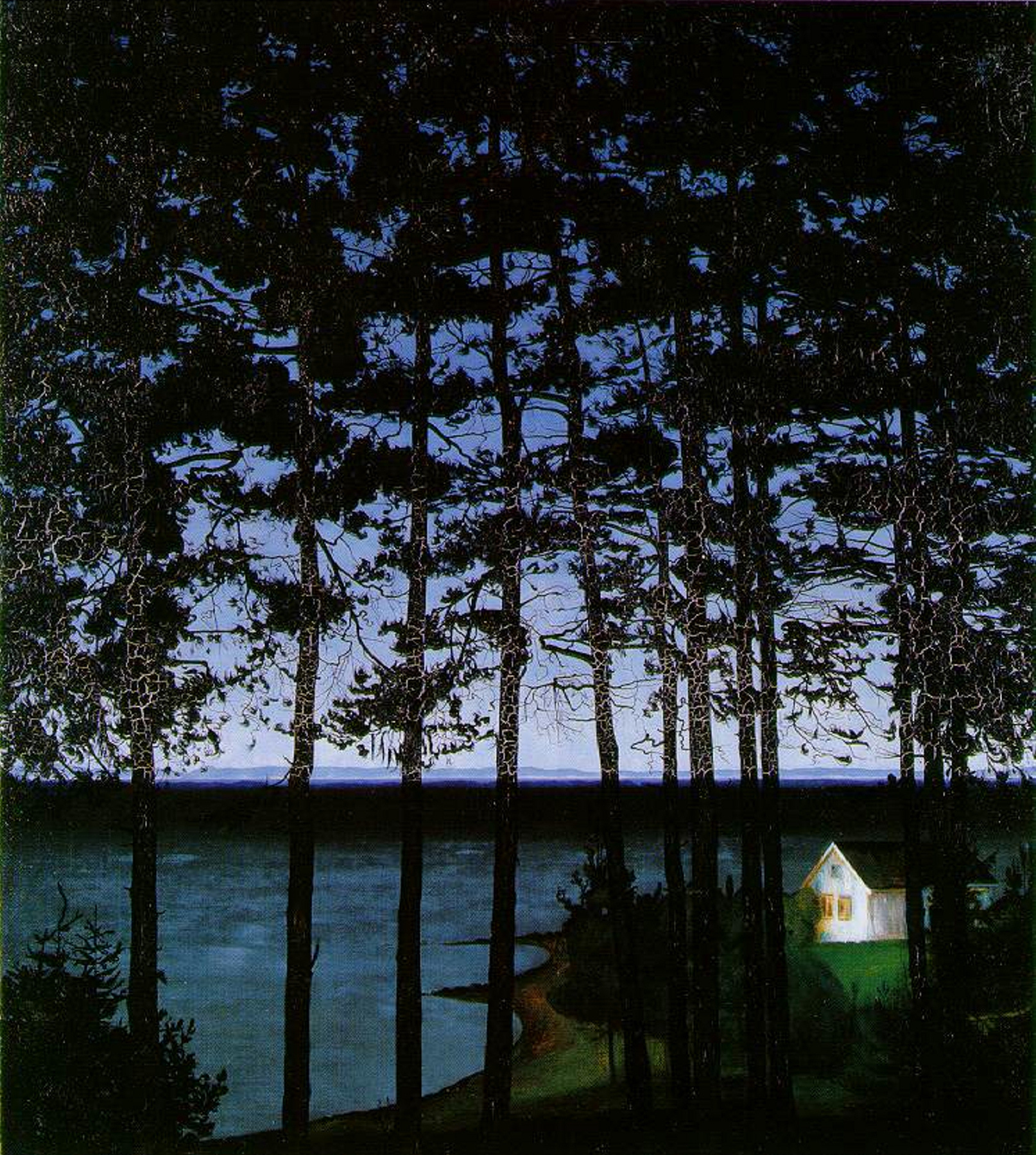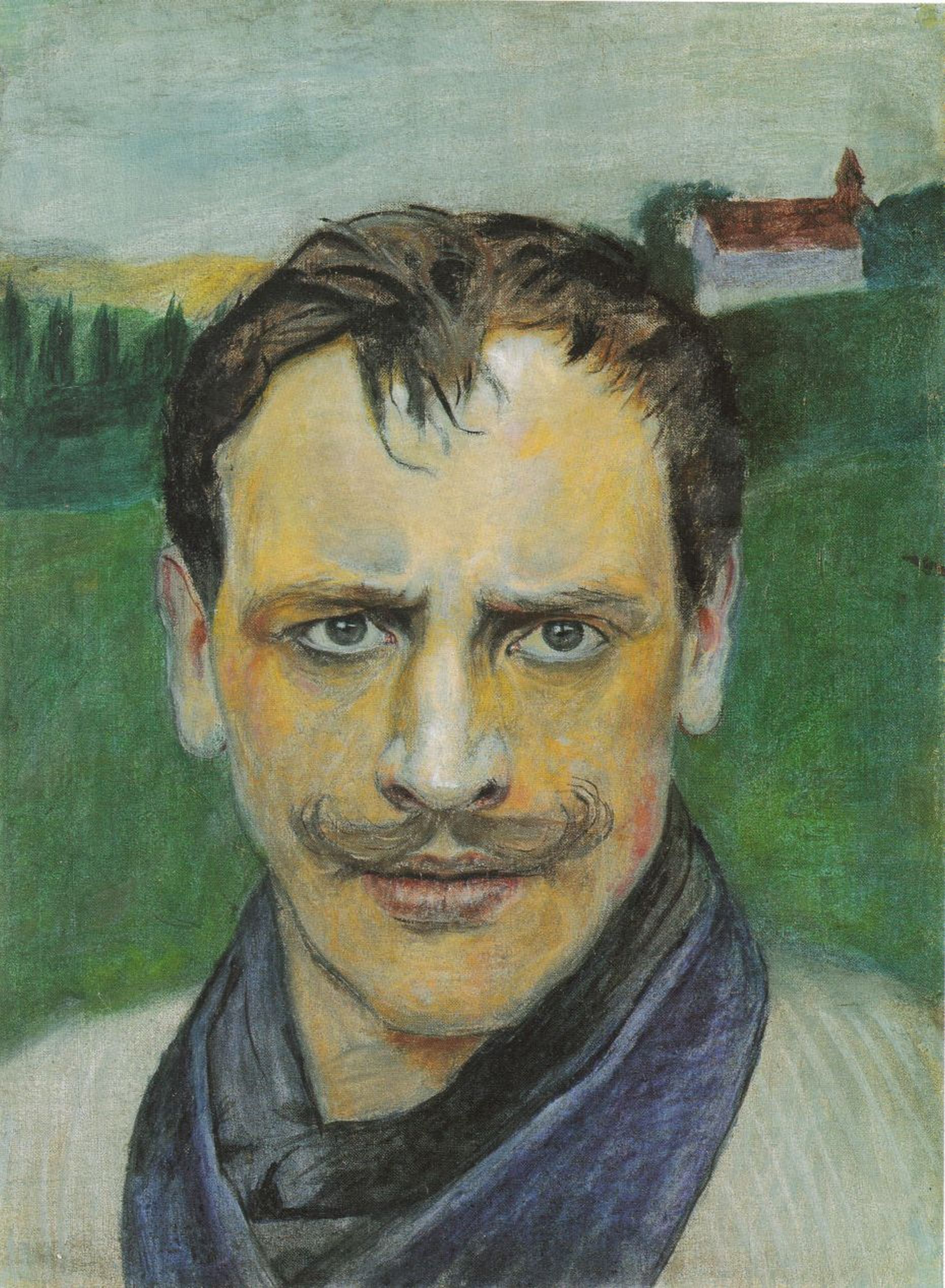Harald Oskar Sohlberg was a Norwegian Neo-romantic painter, particularly known for his depictions of the mountains of Rondane and the town of Røros. Sohlberg wrote that his form sprang forth subconsciously from his first awareness of the landscape. The difference in texture of the sky and earth gave him a sense of standing on a heavy and firm planet gazing out into boundless space. He attributed the simple forms and great lines of his pictures to this first awareness of the landscape. The point of departure was the personal experience. Thus, the artist's experience of his subject preceded the picture. Sohlberg was preoccupied with the concrete local landscape that surrounded him and his emotional reaction to it. The place itself was charged with meaning. The function of line in painting according to him was to express feelings. It could be lonely, down to earth, or melancholy. It could be willful and persevering, if required. It should be developed according to the nature of the subject and the artist's dialogue with nature. Because the picture was bound by a perceived reality, Sohlberg paid tribute to reality by portraying it naturalistically. But his gaze carried with it the legacy of picture formulas that transformed and adapted nature. He was an artist who rarely put a stroke on the canvas before the picture was clear to him in his imagination. As an artist, he was a substitute viewer. What interested him was his own experience and interpretation, regardless of how naturalistic his pictures appeared to be. This painting was suggested by one of our users.




Fisherman's Cottage
oil on canvas • 109 x 94 cm
 Harald Sohlberg
Harald Sohlberg